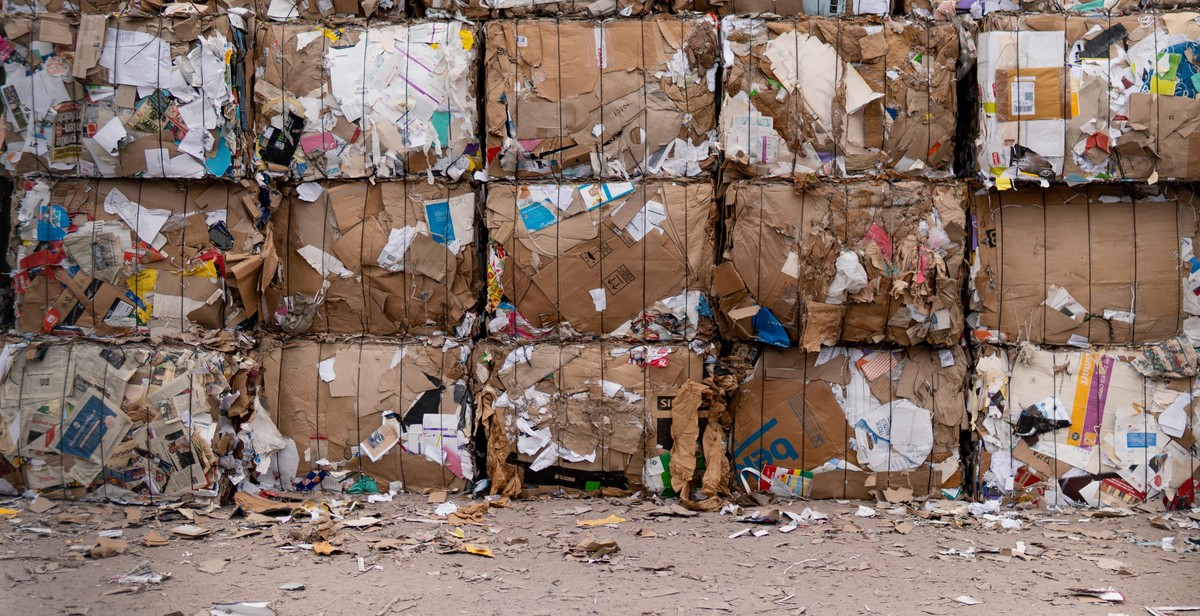Introduction
Improving the environment is a global concern that requires collective effort from individuals, communities, and governments alike. With the rise in environmental challenges such as climate change, pollution, and deforestation, it has become crucial for individuals to take proactive steps towards creating a more sustainable and eco-friendly world.
In this article, we will explore various ways in which individuals can contribute to improving the environment around them. From simple everyday practices to larger initiatives, there are numerous actions that can make a significant impact on the overall health of our planet.
1. Reduce, Reuse, Recycle: One of the most effective ways individuals can improve the environment is by practicing the three R’s – reducing waste, reusing materials, and recycling whenever possible. This helps conserve resources and minimizes the amount of waste that ends up in landfills.
2. Conserve Energy: Energy conservation plays a vital role in reducing greenhouse gas emissions and combating climate change. Individuals can contribute by adopting energy-efficient practices such as using LED light bulbs, turning off unused appliances, and using public transportation or carpooling whenever feasible.
3. Support Sustainable Products and Services: By choosing products and services that are sustainably produced and packaged, individuals can promote environmentally friendly practices. This includes opting for organic and locally sourced food, eco-friendly cleaning products, and renewable energy sources.
4. Plant Trees and Create Green Spaces: Planting trees and creating green spaces not only enhances the aesthetic appeal of an area but also helps combat air pollution, reduce soil erosion, and provide habitat for wildlife. Individuals can participate in tree planting initiatives or start their own community gardens.
By implementing these and other environmentally conscious practices, individuals can play a significant role in improving the environment around them. This article will delve deeper into each of these strategies, providing actionable steps to take towards a greener and more sustainable future.
1. Reduce Energy Consumption
Reducing energy consumption is a crucial step towards improving the environment. By adopting energy-efficient practices, individuals can contribute to a more sustainable future. Here are some effective ways to reduce energy consumption:
1.1 Use Energy-Efficient Appliances
Investing in energy-efficient appliances can significantly reduce energy consumption. Look for appliances with the ENERGY STAR label, as they are designed to consume less energy without compromising performance. These appliances are not only environmentally friendly but also help save on electricity bills.
1.2 Unplug Electronics When Not in Use
Many electronic devices continue to consume energy even when they are turned off or in standby mode. Unplugging these devices when not in use can prevent unnecessary energy waste. Consider using power strips with switches to easily turn off multiple devices at once.
1.3 Optimize Home Insulation
Poor insulation leads to energy loss, as heating or cooling systems have to work harder to maintain a comfortable indoor temperature. Improve insulation by sealing gaps, insulating windows, and adding weatherstripping to doors. This will help maintain a consistent temperature and reduce energy consumption.

2. Conserve Water
Water is a precious resource that should not be taken for granted. By implementing simple measures in our daily lives, we can significantly reduce water wastage and contribute to a healthier environment. Here are some effective ways to conserve water:
2.1 Fix Leaks and Drips
Leaky faucets and pipes can waste a significant amount of water over time. Regularly inspect your plumbing system and promptly fix any leaks or drips. This simple step can save thousands of gallons of water each year.
2.2 Install Water-Saving Fixtures
Replace old, inefficient fixtures with water-saving alternatives. Install low-flow showerheads, faucets, and toilets that are designed to use less water without compromising performance. These fixtures can help reduce water consumption by up to 50%.
2.3 Collect Rainwater for Outdoor Use
Instead of relying solely on tap water for outdoor activities such as watering plants or washing your car, consider collecting rainwater. Set up a rain barrel or a rainwater harvesting system to capture and store rainwater. This eco-friendly practice not only conserves water but also reduces the strain on municipal water supplies.
By adopting these water conservation practices, you can make a significant impact on the environment and help preserve this vital resource for future generations.

3. Reduce Waste
3.1 Practice Recycling
Recycling is an effective way to reduce waste and minimize the negative impact on the environment. By separating recyclable materials such as paper, plastic, glass, and metal from your regular trash, you can contribute to the conservation of resources and the reduction of landfill waste. Ensure that you are familiar with the recycling guidelines in your area and follow them diligently.
3.2 Compost Organic Waste
Composting is a natural process that converts organic waste, such as food scraps, yard trimmings, and even certain types of paper, into nutrient-rich soil. By composting your organic waste instead of throwing it away, you can reduce methane emissions from landfills and create a valuable resource for gardening or landscaping. Set up a composting system in your backyard or explore community composting options available in your area.
3.3 Avoid Single-Use Plastics
Single-use plastics, such as plastic bags, straws, and disposable cutlery, contribute significantly to environmental pollution. To reduce waste, opt for reusable alternatives whenever possible. Bring your own cloth bags for shopping, carry a reusable water bottle, and use stainless steel or bamboo utensils instead of disposable ones. By making these small changes, you can minimize your plastic footprint and help protect marine life and ecosystems from the harmful effects of plastic pollution.

4. Choose Sustainable Transportation
Transportation plays a significant role in environmental conservation. By opting for sustainable transportation methods, individuals can reduce their carbon footprint and contribute to a greener future. Here are some ways you can choose sustainable transportation:
4.1 Walk, Bike, or Use Public Transportation
One of the most eco-friendly ways to commute is by walking or cycling. Not only does it help reduce air pollution, but it also promotes a healthier lifestyle. If the distance is too far, consider using public transportation like buses or trains. Public transportation helps reduce traffic congestion and lowers greenhouse gas emissions.
4.2 Carpool or Share Rides
Another sustainable option is carpooling or ride-sharing. By sharing rides with others, you can significantly reduce the number of vehicles on the road, thereby reducing air pollution and traffic congestion. Additionally, carpooling is a great way to save money on fuel costs.
4.3 Consider Electric or Hybrid Vehicles
Electric and hybrid vehicles are becoming increasingly popular due to their lower emissions and higher fuel efficiency. By choosing these vehicles, you can reduce your carbon footprint and contribute to cleaner air quality. Additionally, governments often provide incentives and tax benefits for purchasing electric or hybrid cars, making them a more cost-effective option in the long run.
By implementing these sustainable transportation choices, individuals can make a positive impact on the environment and work towards a greener future for all.

5. Support Local and Sustainable Products
Supporting local and sustainable products is an effective way to improve the environment and promote a more sustainable lifestyle. By choosing to buy local and organic food, eco-friendly household products, and sustainable fashion, individuals can make a positive impact on the environment and support local businesses.
5.1 Buy Local and Organic Food
Buying local and organic food not only benefits your health but also reduces the carbon footprint associated with long-distance transportation. Supporting local farmers and producers helps to strengthen the local economy and preserve farmland. Look for farmer’s markets, community-supported agriculture programs (CSAs), or organic food stores in your area to find fresh, locally sourced produce.
5.2 Choose Eco-Friendly Household Products
When selecting household products, opt for eco-friendly alternatives that are made from sustainable materials and have minimal environmental impact. Look for certifications such as Energy Star, Green Seal, or EcoLogo to ensure the products meet high environmental standards. Additionally, consider using natural cleaning products or making your own using simple ingredients like vinegar, baking soda, and lemon juice.
5.3 Opt for Sustainable Fashion
Sustainable fashion focuses on reducing the negative impacts of the fashion industry on the environment and society. Choose clothing made from organic or recycled materials, support brands with transparent and ethical manufacturing processes, and consider buying second-hand or vintage clothing. By making conscious choices in your fashion purchases, you can support sustainable practices and help reduce waste in the fashion industry.

6. Plant Trees and Gardens
Planting trees and creating gardens not only enhances the beauty of your surroundings but also plays a crucial role in improving the environment. Here are three ways you can contribute:
6.1 Plant Trees for Shade and Windbreaks
Planting trees strategically around your property can provide shade, reducing the need for excessive air conditioning. Additionally, trees act as natural windbreaks, preventing soil erosion and protecting your home from harsh winds. Choose native tree species that thrive in your region, ensuring they have a positive impact on the local ecosystem.
6.2 Create Pollinator Gardens
By cultivating pollinator gardens, you can help support declining bee populations and promote biodiversity. Include a variety of flowering plants that attract bees, butterflies, and other pollinators. Be mindful of using organic gardening practices and avoiding harmful pesticides to create a safe haven for these vital creatures.
6.3 Grow Your Own Food
Growing your own food not only provides you with fresh and healthy produce but also reduces the carbon footprint associated with transporting food long distances. Start small by growing herbs, vegetables, or fruits in containers or dedicate a portion of your yard for a vegetable garden. Embrace sustainable gardening techniques, such as composting and water conservation, to further minimize your impact on the environment.

7. Educate and Advocate
Education and advocacy play a crucial role in improving the environment. By spreading awareness, supporting environmental organizations, and engaging in sustainable practices at work, individuals can contribute to a greener and healthier planet. Here are some ways you can educate and advocate:
7.1 Spread Awareness
One of the most effective ways to make a positive impact on the environment is by spreading awareness. Utilize your social media platforms, blog, or website to share informative content about environmental issues, such as climate change, pollution, and deforestation. Encourage your friends, family, and followers to take action and make sustainable choices in their daily lives.
7.2 Support Environmental Organizations
Supporting environmental organizations financially or through volunteer work is another way to make a difference. Research and identify reputable organizations that align with your values and contribute to their causes. By donating or dedicating your time, you can help them carry out important initiatives such as reforestation, wildlife conservation, and clean energy projects.
7.3 Engage in Sustainable Practices at Work
Advocate for sustainable practices at your workplace. Encourage your employer to implement environmentally friendly initiatives such as recycling programs, energy-efficient practices, and reducing waste. Lead by example and inspire your colleagues to adopt eco-friendly habits, such as using reusable water bottles and opting for digital communication instead of printing unnecessarily.
By educating others, supporting environmental organizations, and promoting sustainability at work, you can contribute to a greener future. Remember, every individual’s actions count, and together we can make a significant impact on the environment.
